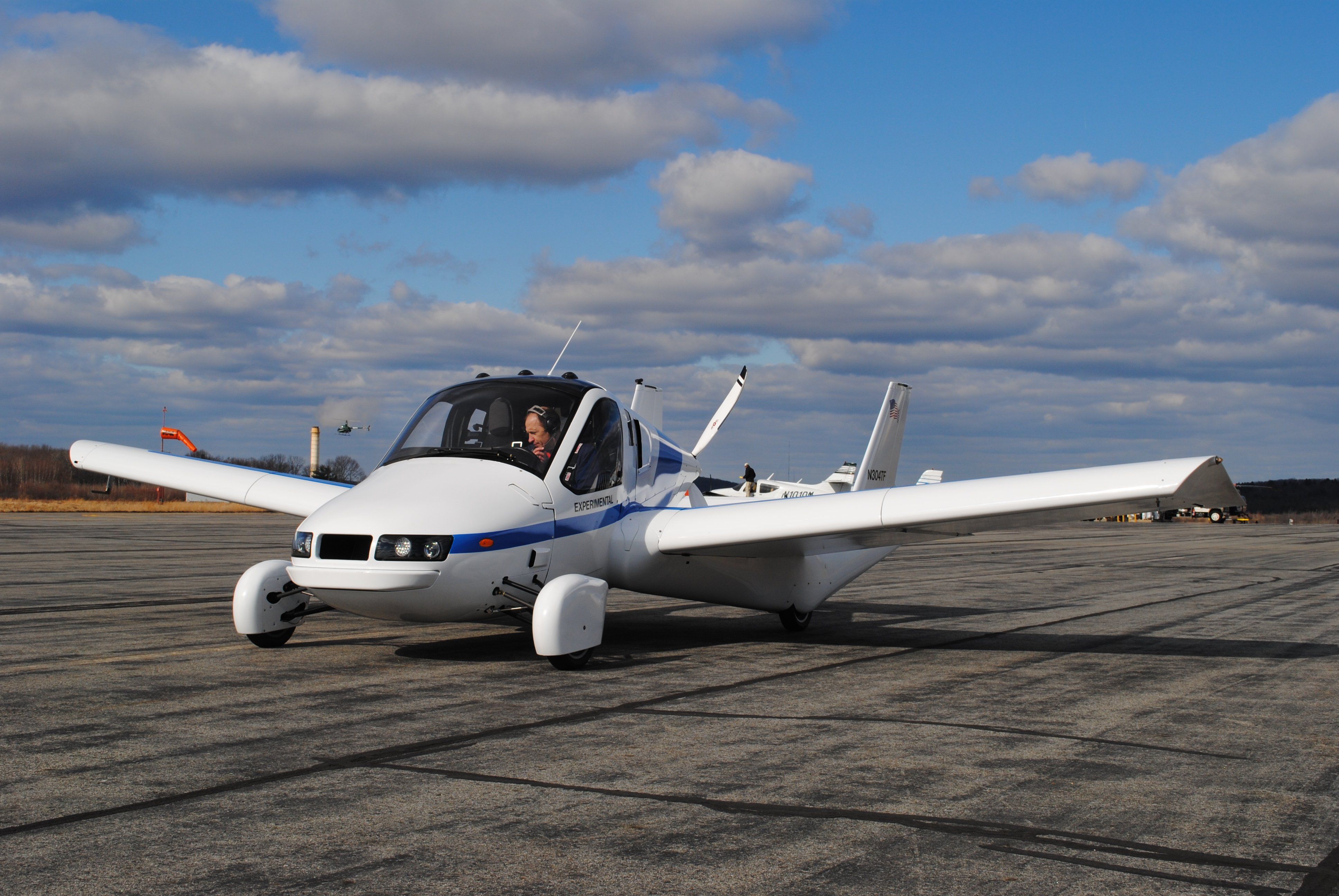
Terrafugia Flying Car
I’m temporarily in a city in NE Ohio where the potholes are SO prolific and SO deep that I have to drive my normal car at very slow speeds to keep it together and keep the wheels and tires intact. I can just imagine THIS contraption navigating such roadways. And we haven’t even addressed the mess this area endures in winter time. Flying cars … give me a break, would ya! Build a car or build an airplane … or go with the idea du jour … an autonomous helicopter like people mover. OR … better still … take a subscription to that website that tells you where all the pilot courtesy vehicles are and fly there. I don’t know what else to say. This idea is ridiculous. Any bets on how long it’ll take someone to do themselves in in one of these things?
Larry Stencel
I’m not quite so pessimistic. There’s Sam Bousfield’s Switchblade which looks pretty promising and that gyrocopter kind of thing in Europe that I think is flying. On the other hand, I remember when I was 11 years old driving my bike down the street thinking to myself, “I bet if I could hook up a propeller to the front of this bike and somehow connect it to the crank and put some wings on this I could fly to school! Wouldn’t that be cool?”
Richard Katz
Driving? I even have reservations about just PARKING fragile aircraft on the street or parking lots! Once you leave the relative safety of the airport, you put your plane at high risk of getting damage or from tampering. No thanks.
Mark Fraser
Rolls-Royce VTOL
Gas turbine technology to generate electricity in an aircraft is not exactly new technology. I believe the jet jockeys call it an “APU.” Using a turbine versus a diesel also makes more sense in regard to weight, complexity, reliability, and TBO. It’s also not terribly inefficient to go from mechanical to electrical and back to electrical, although you will lose some energy. I still can’t understand why everyone is so obsessed with VTOL for everyday transportation, though. The vertical phase of any helo flight, especially near the ground, with swirling winds, wires, and buildings is the most dangerous part, with little margin for error. It’s also an inefficient phase (that’s where you will be pouring energy down the drain). The dream scenario for this type of transport is to take off and land in urban, populated areas. I’m going to get neck strain from looking up all the time to avoid falling aircraft.
James Freal
European ADS-B Mandate
I think European corporate aircraft will be OK because they will be ADS-B equipped by the deadline. The data suggests that is also true for American GA airplanes. The problem is the airlines. After the US airline lobby (Airlines for America) strong-armed the DOT into granting their members a 5-year extension on ADS-B equipage, air carriers all over the world are digging in their heals. No one questions the benefits of ADS-B. Their issue is the downtime and lost revenue associated with taking legacy airframes out of service to equip and certify them. The FAA’s statements notwithstanding, they are going to have a difficult time banning foreign carriers while US carriers fly under an exemption. The rest of the world is adopting the strategy that worked so well for the US airlines – refuse to equip, then run out the clock.
Kim Hunter
A lot of air carriers use leasing companies, so I wonder what impact that will have on ADS-B installation. For example, airlines can just send the planes back at end of lease and the lessors can eat the ground time, equipment and installation costs.
James Briggs
Aviation’s Electric Future
As usual, Paul, you are, as the British say, “spot on.” With all the frenzy surrounding electric flight, it is difficult to see where the hype ends and reality sets in. As with any disruptive concept, different technologies must mature and merge before the final innovation arrives. Prior to that, it is just an idea. Whether we have moved beyond the idea stage in electric flight remains to be seen, but multiple technologies are getting close. Full stability control, or envelope protection, is mature and ready to go. We old timers may pooh-pooh the idea of autonomous (i.e. point and fly) flying machines, but we seem willing to accept envelope protection and programmed flight plans in the latest autopilot offerings, so who knows? As you mention, battery technology seems to be the dragging anchor, but hybrid designs are a way around that limitation. If all this makes it more attractive to younger people to embrace flying, consider it a good thing. However, in the end, it will all come down to price versus value. Henry Ford understood that when he created everyman’s automobile. Before that, they were just rich men’s toys. Sound familiar?
John McNamee
In hindsight the pathway of change is always easy to see (“After all, who would ever want or need a COMPUTER in their home, for God’s sake??”) At the same time, it’s still hard for me to path out a way to socially accommodate jillions of significantly sized air vehicles buzzing at low altitude on random paths above heavily populated city/suburban areas. Seems it would take a major paradigm shift in what people will accept. I suppose, though, a lot of people from the past would look at some things accepted in today’s society and think “how can people accept that stuff?”
John Wilson


































